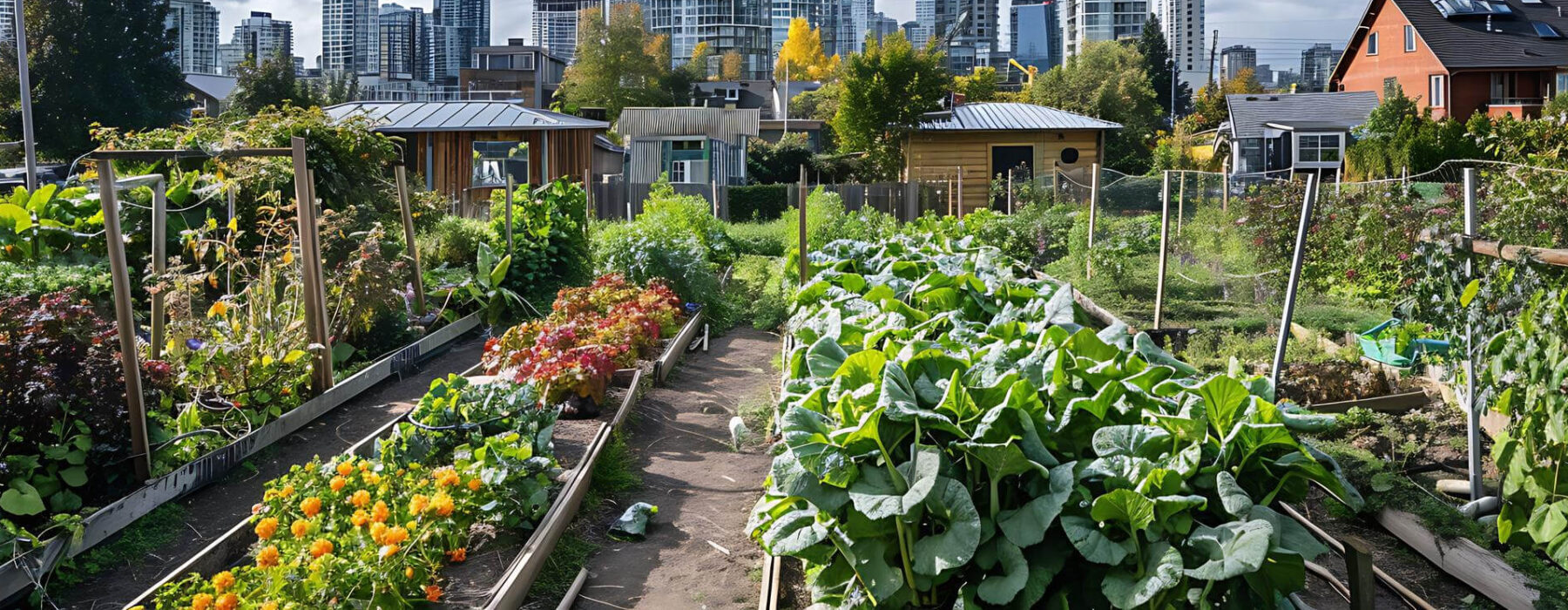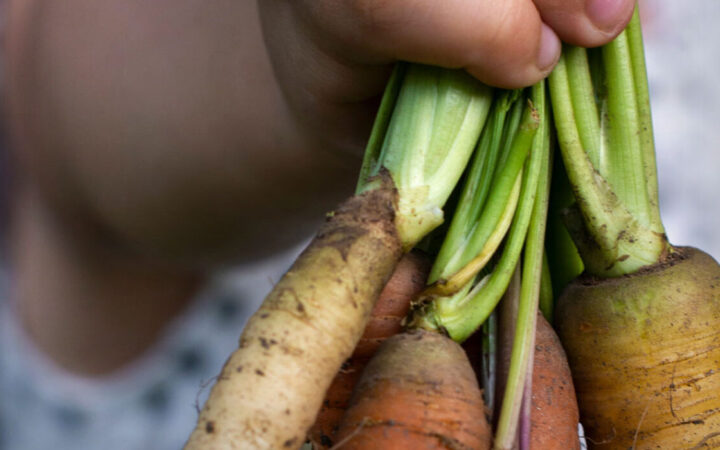This resource discusses how community planners can use existing and innovative tools to support and build local and regional food systems with a goal of increasing access to healthy food and presents some ideas about gaps and opportunities for improvement.
Introduction
Food systems planning was long considered a “hidden” form of planning because the planning discipline itself has historically focused on physical design and infrastructure. Planners have traditionally not focused on food systems in their day-to-day work, which has kept food and agriculture at the margins of planning practice.
Many well-known events in planning history have impacted food systems, but historically, the planning field rarely registered these connections. The advent and technological advancement of the automobile allowed transportation planners to focus on moving vehicles from one place to another as quickly as possible. The automotive industry’s powerful political influence at the federal level furthered the creation of freeways and divestment in other forms of transportation. The resulting transportation networks in many places still leave behind people reliant on other modes of travel such as foot, mass transit, or bicycle. This form of development clearly impacts the ability of many people to get food.
Post-World War II suburbanization patterns also shaped food systems, and these patterns mapped into the racial disparities in access to fresh and healthy food that we see today. Technological advancements spurred employment opportunities that led to people moving from rural towns into cities for jobs, reorienting the population of the United States into urban manufacturing centers with agricultural workers remaining in rural areas. Federal lending programs available exclusively to white families allowed them to buy new homes in the suburbs. Meanwhile, racial and ethnic minorities concentrated in inner cities, which were left to deteriorate due to near complete divestment in services and infrastructure. Supermarkets followed white people to the suburbs for reasons both real and perceived, including the attractiveness of suburban markets versus urban ones, floorspace availability, transportation connections, operational and maintenance costs, and land use regulatory controls that facilitated rapid development of big stores in the suburbs. The development of refrigerated trucks made it possible to transport food safely and quickly over long distances, further fueling these transitions. Even today, the neighborhoods that were hollowed out because of these development patterns are less likely to contain fresh food retailers, a phenomenon known as “supermarket redlining.”
Historically, many planners did not view food access as being within the scope of their work or concern. Rather, it was viewed as being within the domain of agricultural policy, which in turn was seen as driven by the private market and not subject to or needing intervention from planners. Where food could be grown, processed, and sold was generally viewed as a byproduct of land use allowances rather than of intentional or strategic plans. Little thought was given to how food systems intersect with other parts of the built environment such as the transportation system, or how a robust local or regional food system can boost local economies and support environmental and public health goals. Until recently, planners have not prioritized food, food access, and food systems in planning, and have neglected to use existing available planning tools or to create new ones to build equitable food systems and increase access to healthy food. In this sense, food as an afterthought of planning has contributed to creating inequitable food systems.
Recent years have seen a growing interest in how planning can be used to increase access to healthy food. Food systems planning has risen in status in the 21st century, from 2004 when a Food System Planning Steering Committee was formed within the American Planning Association (APA) to 2020 when the APA officially designated a Food Systems Division. This recent interest in food systems as an aspect of planning has contributed to a robust knowledge base that can inform planning decisions. We know now, for example, that the return of supermarkets to inner cities can be a positive for everyone, including community residents and the businesses themselves. In rural communities, smaller tax bases and distances from distribution centers leave fresh food retailers struggling to stay profitable, which means that residents often need personal cars to drive long distances to get to the nearest outlets. Meanwhile, the environmental costs of suburban development, from habitat fragmentation to water and air pollution, are a threat that planners are facing in every corner from transportation to community development.
The greater understanding of the effects of planning on our food systems, and the environmental and socioeconomic externalities of how we have historically built our communities, have given planners an opportunity to rethink how we can plan for and build equitable food systems that increase access to healthy food. In some situations, this involves adopting new planning tools and strategies, and in others it might involve working within existing ones. This resource provides an overview of some planning tools and strategies, discusses how planners can use existing and innovative tools to support and build local and regional food systems with a goal of increasing access to healthy food, and presents some gaps and opportunities for improvement.
Acknowledgements
This resource was prepared by the Public Health Law Center for the Healthy Food Policy Project. We thank the following people for their thoughtful review and wise comments on an earlier version of this resource: Kami Pothukuchi, Distinguished Service Professor of Urban Studies and Planning at Wayne State University; Molly Riordan, Food Systems Planner and member of the APA Food Systems Division Executive Committee; and Kathryn Underwood, City Planner for the Detroit City Planning Commission and Healthy Food Policy Project Advisory Committee member. We also thank Jonathan Rosenbloom, Professor of Law, Vermont Law School, for providing high-level feedback.
Suggested Citation
Local Planning and the Food System: Tools for Increasing Access to Healthy Food, Healthy Food Pol’y Project, https://healthyfoodpolicyproject.org/local-planning-and-the-food-system (last visited May 30, 2024).




